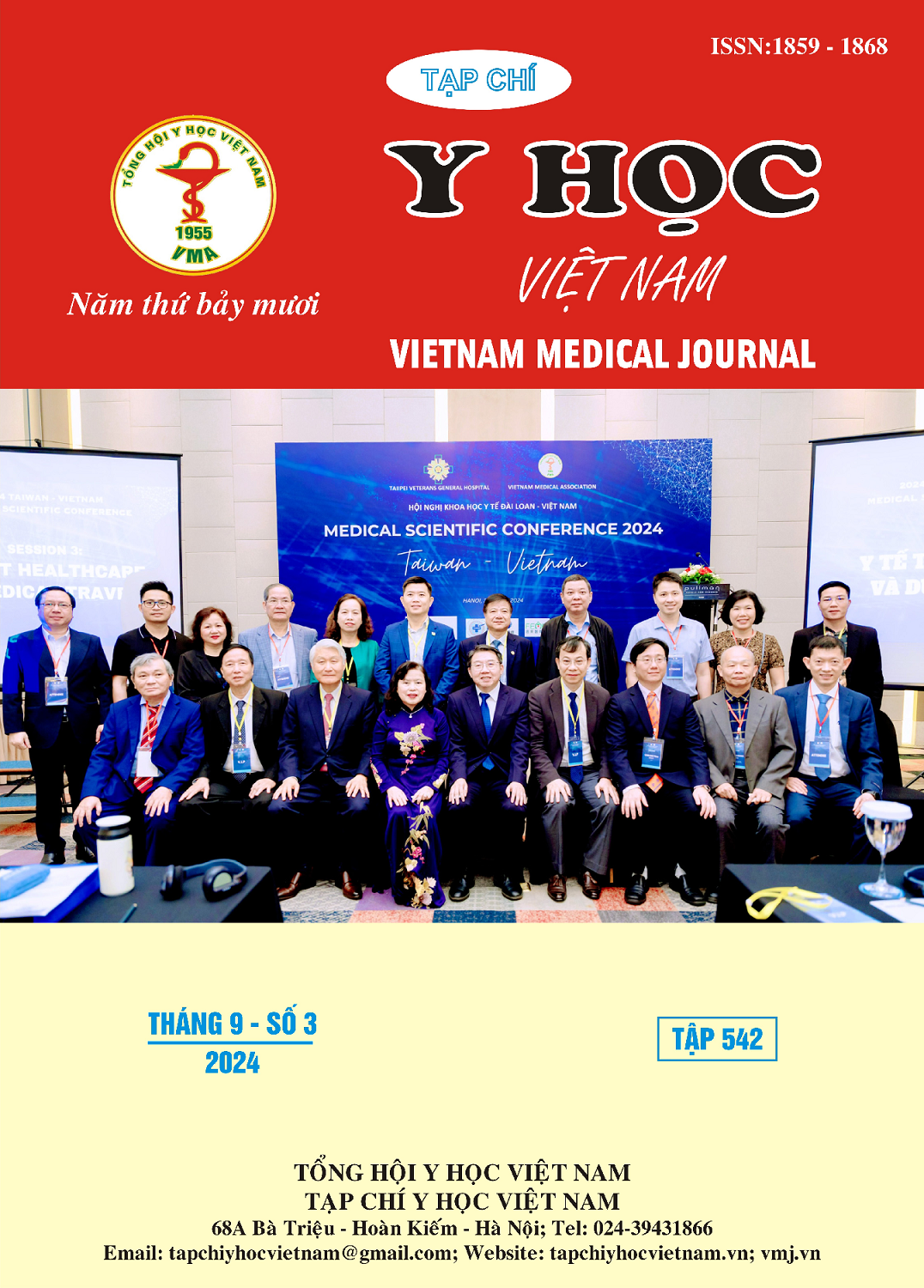DRUG-RELATED PROBLEMS IN PRESCRIBING FOR PREGNANCY OUTPATIENTS AT A GYNECOLOGY OBSTETRIC HOSPITAL
Main Article Content
Abstract
Background: Drug use in pregnant women has many potential risks due to lack of research data and can lead to drug-related problems (DRPs). Therefore, determining DRPs in prescribing for pregnant women is necessary to optimize treatment. Objectives: To identify characteristics of outpatient drug prescriptions and determine frequencies and types of DRPs in outpatient prescriptions. Materials and methods: A cross-sectional study was conducted on the prescriptions of pregnancy outpatients at a Gynecology Obstetrics Hospital from May 2023 to January 2024. DRPs were determined by comparing prescriptions with reference sources. DRPs are classified according to Decision 3547/QD-BYT on the issuance of drug use analysis forms. Results: There were 333 prescriptions included in the study, aged 29.42 ± 5.539. The group of age 25-29 accounts for the highest rate (33.3%). The first trimester of pregnancy accounts for the highest rate (47.5%). The rate of prescriptions with at least 1 DRP was 17.4%. The average DRP was 0.2 DRPs/prescription. The most common DRP type was inappropriate timing of administration (6.9%), too low dose (5.7%), inappropriate route of administration (3%), other problems with drug selection (1.8%), no indications (1.8%), dosing instructions not available clearly consistent (0.9%), too high dose (0.3%). Conclusion: The prevalence of DRPs was quite low, which showed that the prescribing process for pregnant women was highly valued and careful.
Article Details
Keywords
Drug-related problems, pregnancy, prescriptions, outpatients.
References
2. Nguyễn Thị Nghĩa Bình. Phân tích đặc điểm kê đơn thuốc ngoại trú cho phụ nữ có thai tại Bệnh viện Phụ Sản Hà Nội.Luận văn Dược sĩ chuyên khoa cấp I, Trường Đại học Dược Hà Nội. 2022.
3. Bộ Y tế. Dược thư Quốc gia Việt Nam, Nhà xuất bản Khoa học và Kỹ thuật, Hà Nội. 2022.
4. Alema NM, G. S, Melesse S, Araya EM, Gebremedhin H, Demsie DG, et al. Patterns and determinants of prescribed drug use among pregnant women in Adigrat general hospital, northern Ethiopia: a cross-sectional study. BMC pregnancy childbirth. 2020;20:1-9.
5. Briggs GG, Freeman RK, Towers CV, Forinash AB. Briggs drugs in pregnancy and lactation: a reference guide to fetal and neonatal risk: Lippincott Williams & Wilkins; 2021.
6. Holness N. High-risk pregnancy. Nursing Clinics of North America. 2018;53(2):241-51.
7. Sharma B, Deep J, Pandit C, Basnyat B, Khanal B, Raut B, et al. Overview on current approach on recurrent miscarriage and threatened miscarriage. Clin J Obstet Gynecol. 2020;3:151-7.
8. Smedberg J, Brathen M, Waka MS, Jacobsen AF, Gjerdalen G, Nordeng H. Medication use and drug-related problems among women at maternity wards-a cross-sectional study from two Norwegian hospitals. Eur J Clin Pharmacol. 2016;72(7):849-57.
9. Statista. Fertility rate in Vietnam from 2000 to 2020, with a forecast to 2025 by age group. 2020. https://www.statista.com/statistics/ 1101017/vietnam-fertility-rate-by-agegroup/.
10. van Mil JF, Westerlund LT. Classification for Drug related problems, Pharmaceutical Care Network Europe Association, V9.1. 2020.


